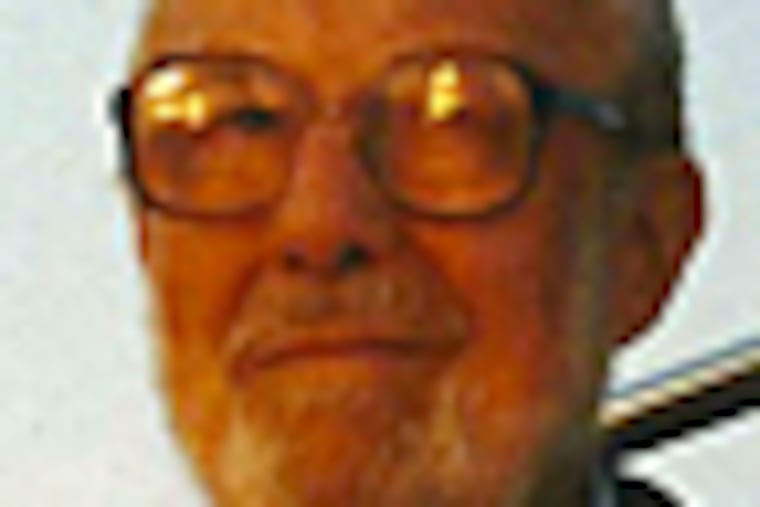Christian J. Lambertsen, 93, developer of the first scuba gear
Christian J. Lambertsen, 93, founder of the University of Pennsylvania's Institute of Environmental Medicine and developer of the first self-contained underwater breathing apparatus - scuba gear - died Feb. 11 at Dunwoody, a retirement community in Newtown Square. He formerly lived in Ardmore.

Christian J. Lambertsen, 93, founder of the University of Pennsylvania's Institute of Environmental Medicine and developer of the first self-contained underwater breathing apparatus - scuba gear - died Feb. 11 at Dunwoody, a retirement community in Newtown Square. He formerly lived in Ardmore.
A native of Scotch Plains, N.J., Dr. Lambertsen worked as a youth at resorts along Barnegat Bay. An expert swimmer, he began experimenting with homemade diving equipment.
He earned a bachelor's degree from Rutgers University and attended the Penn School of Medicine, where he worked on his diving apparatus by using parts from anesthesia machines.
In 1941, with war imminent, he contacted the military about his apparatus and began working with the Army's Office of Strategic Services.
After graduating first in his class from medical school and completing an internship at Penn, Dr. Lambertsen received a commission in the Army and trained OSS units to use his scuba gear.
Some OSS members assisted the British in underwater reconnaissance along the coast of Burma. Others carried out reconnaissance of Japan.
Divers were referred to as frogmen because of their camouflage wet suits and flippers. Their equipment included a mask, breathing tubes, a canister for absorption of exhaled carbon dioxide, a breathing bag, and controllable oxygen supply, all mounted on a canvas vest.
After the war, scuba gear was declassified and made available to the public. It was used by police and fire department rescue squads, in mine rescue work, and in salvage operations. Eventually, scuba diving became a sport.
After his military discharge. Dr. Lambertsen returned to Penn as a pharmacology instructor in the medical school. When Penn was about to scrap an altitude chamber it had set up during the war, he salvaged it and in 1948 set up a primitive environmental research chamber in conjunction with the newly established Office of Naval Research.
He conducted a variety of research activities for the Navy and the U.S. space program during the 1950s and '60s.
In 1968, he founded Penn's Institute for Environmental Medicine.
By 1987, when Dr. Lambertsen retired as director of the institute, scientists in its laboratories were pushing back the frontiers of human ability to live in hostile environments - from ocean depths to outer space, from intense heat to bitter cold.
He continued his research as a professor emeritus at Penn. His studies were focused on how a medical treatment known as hyperbaric, or high-pressure, oxygen therapy can help people suffering from many diseases.
He continued to invent and conduct research until he was 90.
In 1992, he patented inergen, an environmentally friendly fire-suppression product now used in commercial buildings. He developed it initially to extinguish fires in submarines and spacecraft.
In November, he received the John Scott Award from Philadelphia's board of directors of City Trusts for his contribution to science and medicine. Previous award winners include Marie Curie, Thomas Edison, and Jonas Salk.
Besides his academic and scientific pursuits, Dr. Lambertsen was an active farmer, gardener, and conservationist. He raised cattle, hay, produce, and bees on his waterfront farm in Bozman, Md.
He is survived by sons Christian Jr., David, Richard, and Bradley; and six grandchildren. His wife of more than 40 years, Naomi Hill Lambertsen, died in 1985.
A memorial service will be held at Penn in the spring at a date to be determined.